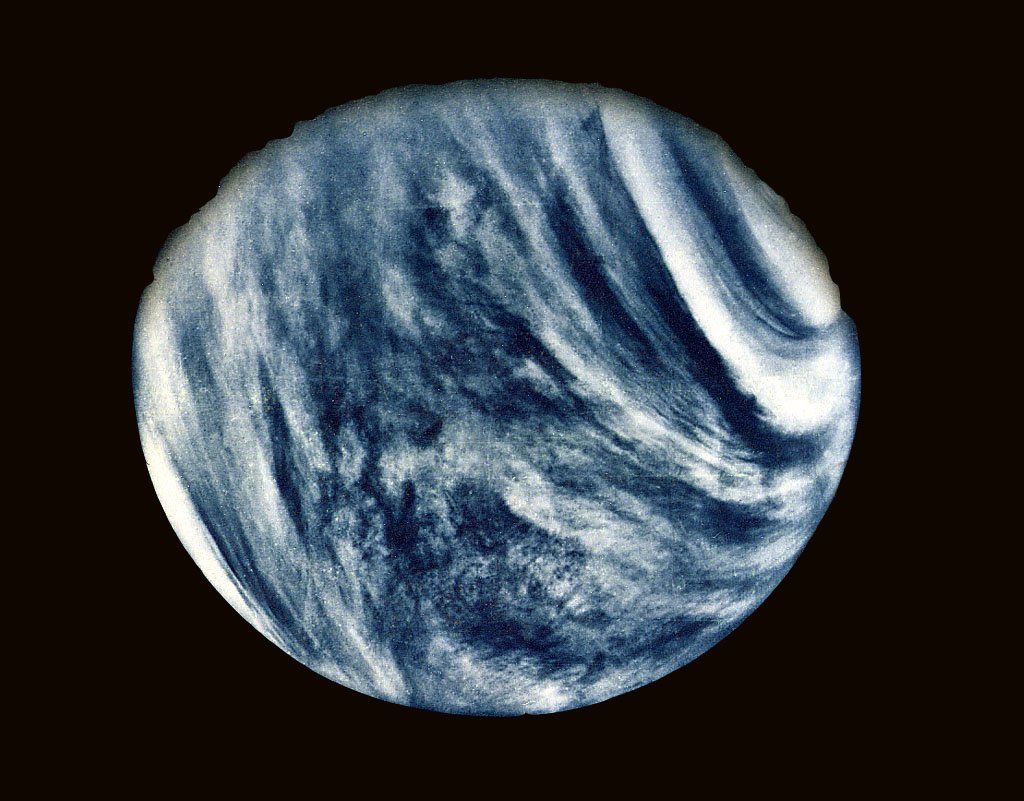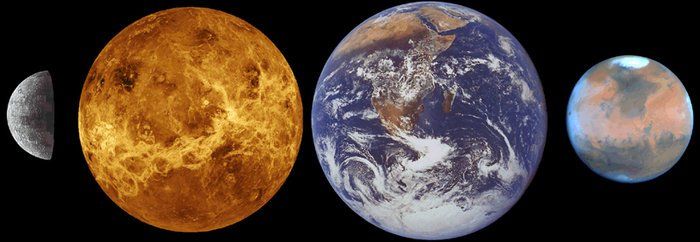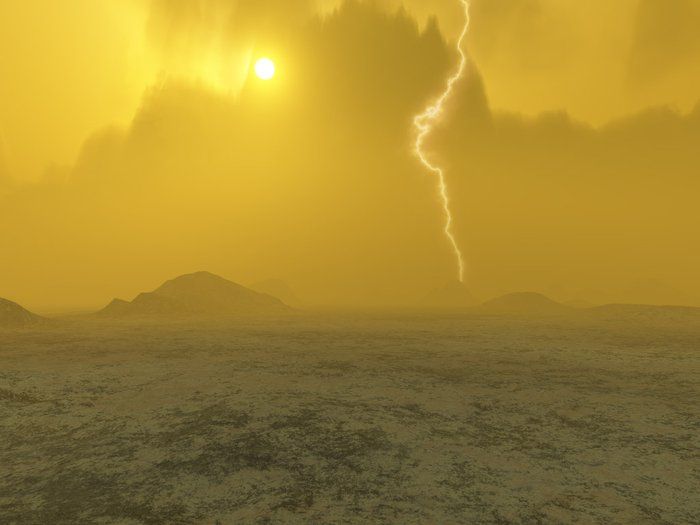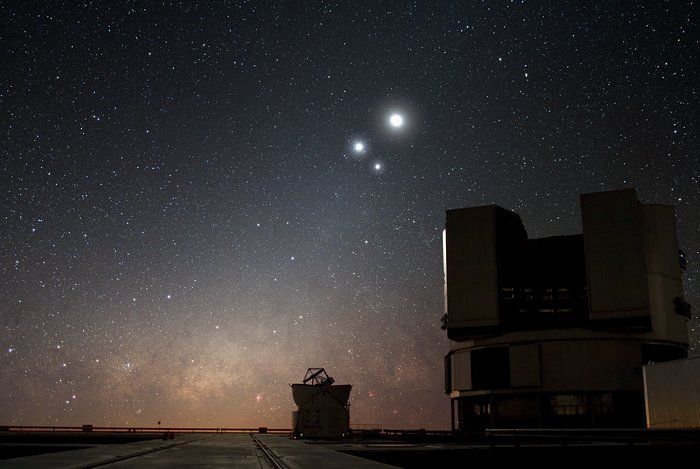This web page is created within BALTICS project funded from the European Union’s Horizon2020 Research and Innovation Programme under grant agreement No.692257.
Venus
Venus is the second planet from the Sun. Its diameter is about 12,000 km, which means that Venus is only slightly smaller than the Earth.
Venus is visible to the naked eye in the Earth’s sky. Sometimes it is visible in the east before sunrise and sometimes in the west after sunset. It is the brightest natural object in the sky after the Moon. Venus is found in the mythology of many nations, including Latvian folklore as Auseklītis (Morning Star) and Rieteklītis (Evening Star).
When looking at Venus with telescopes that collect visible light, as with Mercury, phases can be seen. Even though Venus is relatively large and closer to Earth, objects on its surface cannot be seen in telescopes because Venus is covered by a very dense and thick atmosphere.
Venus’s orbit around the Sun is almost a perfect circle. The average distance is 108 million km. One year on Venus lasts 225 Earth days. Venus rotates slowly on its axis and in the opposite direction compared to most of the other planets in the Solar System. It takes 243 Earth days to complete one rotation. However, this does not mean that the day-night cycle lasts 243 Earth days. One day, or the time from one sunrise to the next, on Venus lasts 117 Earth days.
Venus has an iron core. It is surrounded by a thick layer of molten rock, or a mantle. The outer layer is the crust. There are mountains, valleys and many volcanoes on the surface of Venus. Maxwell Montes, which is 11 km high, is the highest point on Venus.
Craters can also be found on Venus, but due to the dense atmosphere only very large objects can reach the surface, so there are no craters smaller than 1.5–2 km in diameter on this planet.
Because Venus is named after the ancient Roman goddess of beauty, most of the objects on its surface are named after famous Earth women and deities.
Venus’ atmosphere, which is composed mainly of carbon dioxide, for a long time has made it difficult to observe the planet. Until the middle of the 20th century, it was believed that conditions on Venus were similar to those on Earth during the age of dinosaurs – warm and humid climate. These findings even led to several science fiction works in which people, upon arrival on Venus, discovered life forms similar to prehistoric creatures.
Besides carbon dioxide, there is a very high concentration of sulphuric acid in the atmosphere of Venus. Droplets of sulphuric acid form clouds. Thunderstorms, lightning and sulphuric acid rain occasionally occur on Venus.
If a person were on the surface of Venus, he would experience atmospheric pressure about 92 times greater than that on Earth.
Venus’ thick atmosphere efficiently traps the Sun’s heat; it is hellishly hot on Venus. The surface temperature is about 460oC.
Already mentioned sulphuric acid rain evaporates without reaching the planet’s surface. Temperature drops in the upper atmosphere. For example, at a height of about 100 km, the temperature is about the same as on the Earth’s surface.
Based on the above mentioned facts about the composition of the atmosphere, it is now assumed that Venus is unsuitable for the life forms known to us.
Venus has been studied using Earth-based telescopes and radars. Because the planet lies between the Earth and the Sun, it is sometimes possible to observe a transit when Venus passes through the Sun’s disk. This phenomenon can be seen even with the naked eye using special filters. Transits of Venus happen every 120 years or so. Then, two transits occur, 8 years apart. The next transits are expected on December 2117 and December 2125.
Many space missions have helped to learn more about Venus. Several automated spacecrafts have landed on its surface, but given the harsh conditions prevailing on the planet did not last long. Much more information is being gathered by spacecrafts that have flown by or orbited Venus. One of the most productive missions was Venus Express, the European Space Agency’s spacecraft, which orbited from 2006 to 2014.
























